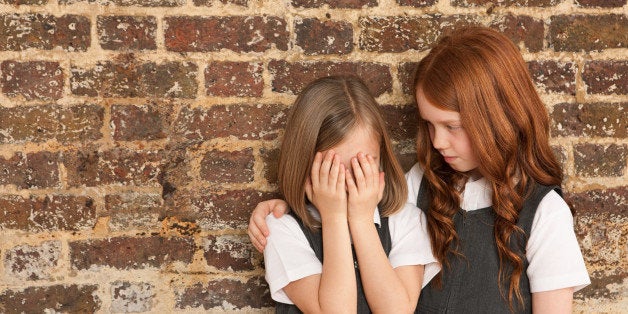
In the video, "Emotional Baby is Moved to Tears by Mom's Singing," we witness the power of emotion in even the youngest of babies. At only 10 months old, the baby's deep feelings spill over in the form of tears when he hears his mother's beautiful singing.
Learning about emotions like these is a long process and a big part of growing up. From an early age, we begin to name the feelings babies and toddlers are having. That makes you angry. Oh, you are so frustrated. What a happy baby! That is the beginning of a child's emotional literacy development, his growing ability to recognize, access and name his emotions. Then in school, he learns to sing, "If you're happy and you know it, clap your hands...if you're sad and you know it, shed a tear..." One feeling at a time, he learns to handle and express his feelings. And each child handles feelings in his own way.
I am reminded of a client, the parent of a kindergarten child who was hyper-emotional. When something beautiful happened, the child cried. Something exciting brought her to tears. With nervousness, her tears flowed forth. At first, her classmates ran to comfort her; to them, her tears meant she was hurt or sad and needed help. They soon came to know that wasn't necessarily the case; she was just emoting. Her example taught them all another piece to their literacy -- being just plain emotional. Crying doesn't always mean you are not OK.
And there are many people who cry when they are happy. I am moved to tears at every wedding, graduation or rite of passage I attend. My own children, quite accustomed to my leaking faucets when we see movies of all kinds, knowingly exchange an eye roll when I cry. There are so many ways and reasons that we humans express our myriad feelings.
Emotional literacy can get tricky when a person experiences two dissimilar feelings at the same time. We call that "double-dip feelings" (Thanks to Barbara S. Cain, M.S.W. for coining that expression). For example, when you are about to go on a roller coaster you might be excited and scared at the very same time. On the first day of school, a child can be eager and worried. Maybe the birth of a sibling makes a child feels happy and sad, right at the same time. When the feelings don't seem to go together, an unmatched pair, it is confusing and hard to process. The child might not know which emotion he should be feeling. He hasn't learned that he can truly have two feelings, even opposite feelings, at the same time.
Teaching children about their feelings -- to recognize them, to name them, to express them appropriately -- is an important part of being a parent. Sharing your feelings with your child, modeling how you handle them or expressing that you are having two feelings at once, is a powerful way for your child to learn to handle his own feelings. Whether you are happy or angry or frustrated -- or all of them at once -- your child is watching what you do. The more the child experiences with you, the more familiar, comfortable and emotionally literate he will become. In turn, he will know what to do with his own feelings and not be overwhelmed by them.